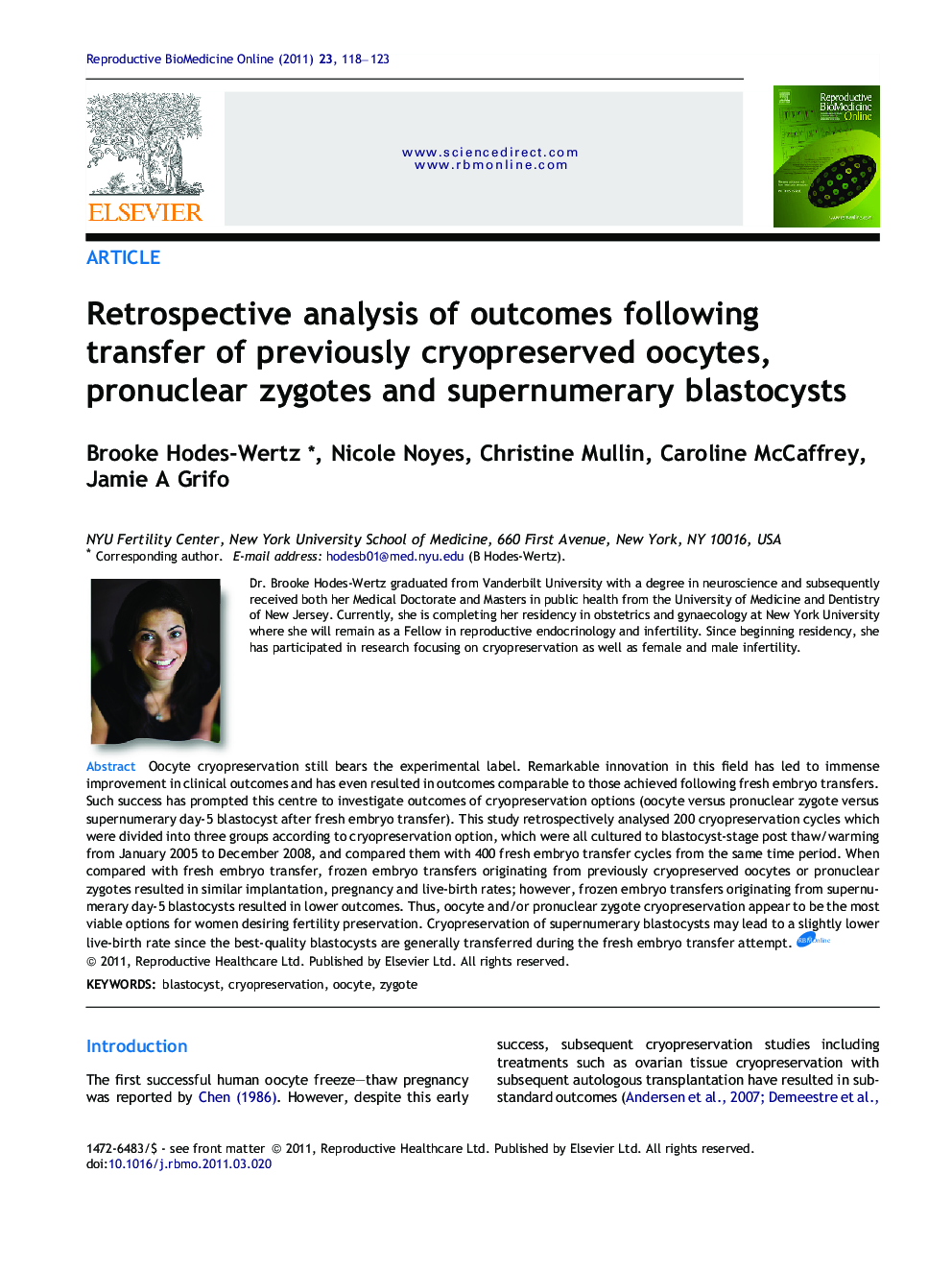| Article ID | Journal | Published Year | Pages | File Type |
|---|---|---|---|---|
| 3971483 | Reproductive BioMedicine Online | 2011 | 6 Pages |
Oocyte cryopreservation still bears the experimental label. Remarkable innovation in this field has led to immense improvement in clinical outcomes and has even resulted in outcomes comparable to those achieved following fresh embryo transfers. Such success has prompted this centre to investigate outcomes of cryopreservation options (oocyte versus pronuclear zygote versus supernumerary day-5 blastocyst after fresh embryo transfer). This study retrospectively analysed 200 cryopreservation cycles which were divided into three groups according to cryopreservation option, which were all cultured to blastocyst-stage post thaw/warming from January 2005 to December 2008, and compared them with 400 fresh embryo transfer cycles from the same time period. When compared with fresh embryo transfer, frozen embryo transfers originating from previously cryopreserved oocytes or pronuclear zygotes resulted in similar implantation, pregnancy and live-birth rates; however, frozen embryo transfers originating from supernumerary day-5 blastocysts resulted in lower outcomes. Thus, oocyte and/or pronuclear zygote cryopreservation appear to be the most viable options for women desiring fertility preservation. Cryopreservation of supernumerary blastocysts may lead to a slightly lower live-birth rate since the best-quality blastocysts are generally transferred during the fresh embryo transfer attempt.Despite substantial advancements in oocyte freeze–thaw methods, allowing for much improved clinical outcomes, including live birth rates comparable to those achieved following fresh embryo transfer cycles, oocyte cryopreservation still bears the experimental label. Such recent reported success with cryopreservation has prompted us to investigate the clinical outcomes of our institution’s currently available cryopreservation options (oocyte versus pronuclear zygote versus supernumerary day-5 blastocyst remaining after a fresh transfer). A total of 200 cryopreservation cycles were reviewed and subdivided according to cryopreservation optioninto three groups (oocyte versus pronuclear zygote versus day-5 blastocyst cryopreservation that were remaining after a fresh transfer), and compared with 400 fresh embryo transfer cycles from January 2005 to December 2008. When compared with fresh embryo transfer cycles, frozen embryo transfers originating from previously cryopreserved oocytes or pronuclear zygotes resulted in similar implantation, pregnancy and live birth rates. However, frozen embryo transfers originating from supernumerary day-5 blastocysts resulted in lower implantation and pregnancy rates when compared with controls. Thus, oocyte and/or pronuclear zygote cryopreservation appear to be the most viable options for women desiring fertility preservation as the outcomes from these treatments were comparable to those of fresh embryo transfer treatments. In addition, cryopreservation of supernumerary day-5 blastocysts may lead to a slightly lower live birth rate since the best-quality blastocysts are generally transferred during the fresh embryo transfer attempt.
